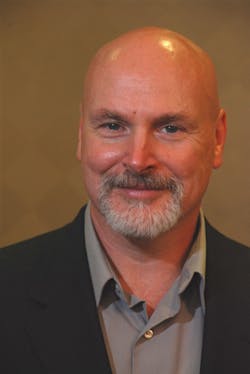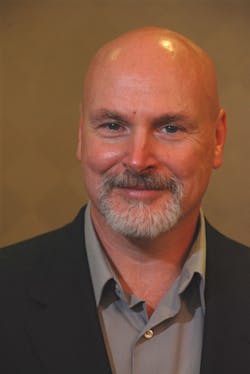Team EHR: EHR and the office manager – the chart stops here
By Mike Uretz
May 14, 2013
Powered by DentalSoftwareAdvisor.com
Editor's Note: This is the fourth installment in the series on electronic dental records with expert Mike Uretz, editor-in-chief of DentalSoftwareAdvisor.com. See the previous article here.
In my last two articles, I detailed what roles dentists and hygienists play as a team in the successful selection, purchase, and implementation of their dental electronic health records systems. I've received numerous viewer comments reinforcing the suitability of this approach. With that said, it's time to bring the administrative staff into the equation. You might question why your front desk and back office staff should be a part of the electronic health records selection and implementation team, but I can assure you that if you don't get both input and buy off from these folks, your overall project won’t be as successful as it could be.
The key here is that we’re entering a new era of dental software.
From RDH magazine: The advent of electronic dental records
The evolution of EHRs from a practice management perspective
To understand why the role of the administrative staff has become increasingly important in EHR selection, it is helpful to review the evolution of the technology. When EHRs first started entering the medical landscape, it was believed that the practice would just keep their present practice management system and interface into their new EHR system. Although a popular model in the beginning, it changed over time because vendor-to-vendor relationships changed, practices got tired of using different screen designs and navigation between practice management systems and EHRs, andboth administrative and technical staff members didn't see the level of integration with the data that they had expected. Since there were two vendors involved with an interfaced system, there was a lot of finger-pointing when there were issues.
When practices decided to move to an EHR system, they looked at more of an integrated practice management system and EHR from one vendor. Although there was hesitancy initially in replacing a practice management system that everybody had used for years, many times the practices found that the EHR vendor actually had a better mousetrap in terms of their practice management features, functionality, and ease of use. It was common to see the administrative folks chaining themselves to their computers, resistant to move to a new practice management system. But once they were involved in the process and could see that the integrated practice management/EHR systems were actually better than what they had, they embraced it – along with their clinical counterparts.
Electronic health records: Where we've been and where we're going
Integration of administrative features in EHRs
This same shift will happen in dental software. I wrote recently about how practices would do themselves a disservice by not exploring better “mousetraps” when it comes to dental software – especially the new world of electronic dental records. With next-generation integrated practice management and EHR systems, the front desk and back office staff need to be involved.
One of the things that we are expected to see as systems get more sophisticated are "preemptive" alerts that can advise a staff member booking an appointment if the patient has any normal maintenance or procedures due. The information comes from that patient’s electronic health record, but winds up being displayed within the scheduling system. I would think that the front desk person would have valuable input into how that looks, as well as how the navigation is set up.
"With next-generation integrated practice management and EHR systems, the front desk and back office staff need to be involved."
Billing codes will also get increasingly more sophisticated, going from procedural to diagnostic in nature. Instead of being a manual process, they’ll flow electronically from the point of care directly to the practice management system, which can filter and scrub the claim before it is sent to the payer. How this ultimately works – including the transition from the exam room to claims processing – is obviously of interest to the person in charge of billing and finance for the practice.
As next-generation dental software gets more sophisticated, we will see more workflow capabilities being built into the software, and this will cover clinical and administrative processes. The screens that will be used to manage workflow will be accessible from all areas and functions in the practice. To not include administrative staff members in evaluating how the software deals with workflow would be a mistake.
Making the switch to electronic dental records
These are just examples of some of the features that cross over between clinical and administrative areas and which are candidates for input from administrative and front desk staff. In this new world of integrated practice management and EHR systems, administrative staff will be called upon to evaluate and review the front desk and back office features of new software, strictly from a practice management point of view.
Evaluating next-generation software sometimes becomes a compromise between practice management features and EHR features. Many times, when helping conduct an evaluation and selection of a new practice management and electronic health record system, I have basically helped mediate between administrative and clinical staff when it comes to choosing an overall system.
The most blatant illustration of this compromise that comes to mind is a couple of years ago when I was asked to help a practice look at a new integrated electronic health record and practice management system and the billing expert was on one side of the table excited about features found in one vendor's practice management system and the clinicians were on the other side the table excited about clinical features found in another vendor's EHR. One of the more insightful providers stood up and proclaimed "We shouldn't just dismiss the features that our billing person likes because we could have the best clinical system in the world, but if we can’t get paid on a timely basis because of an inadequate practice management, then does it really matter?" I helped them come to a compromise, and at the end of the day both the practice management and clinical staffs were happy with the software solution we came up with.
Administrators – take charge!
So, what’s the message to administrative staff as your practice evaluates and implements dental EHRs.
Ask that you be a part of the process and that you have input into the EHR evaluation process in such areas as:
- How the electronic claim is handled from the point of care
- How real time payer eligibility verification is integrated at the point of care
- How clinical alerts and patient follow-up are handled and presented on the front end
- Claims scrubbing within the EHR
- Have input into the electronic workflow processes
- Review how messaging and task management works
During implementation and training, make sure that you can carve out time to be involved in the project. Typically, front desk and back office staff try to fit in a few minutes here and there, but this scattered approach leads to minimal success.
Remember, if you aren’t involved in the process, then the system might not satisfy your needs and expectations as well as it could have – and ultimately the daily operation of the practice falls back on you.
Other Team EHR columns:
Team EHR: A team approach to electronic dental records
Team EHR: In EHR, the "H" may very well stand for hygienist
Team EHR: Electronic health records and the dentist
Mike Uretz is a 30-year technology veteran and nationally-recognized Electronic Health Records (EHR) and healthcare software expert. Mike has helped hundreds of individual practices and multi-clinic groups properly evaluate and select their EHR solutions, structure and negotiate contracts, and provide management and oversight for their implementations. In addition, Mike has been a member of the Certification Commission for Health Information Technology EHR vendor certification workgroup (CCHIT), and has helped a number of statewide Regional Extension Centers acquire EHR technology under the Federal Meaningful Use incentive program. Mike is now applying his wealth of knowledge and experience to the dental industry to introduce dentists to EHR software best practices, and to help them avoid the pitfalls experienced by other healthcare professionals. Mike is also the founder and editorial director ofDentalSoftwareAdvisor.com, a trusted and objective online resource on all matters related to dental software. Mike can be contacted at [email protected] or 425-434-7102.

